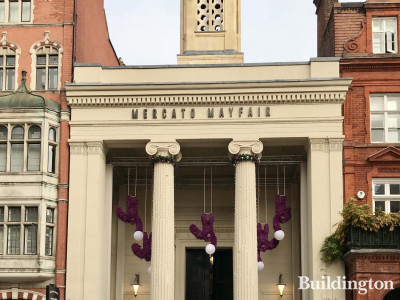Arup and Grosvenor have unveiled an innovative new ‘living wall’ which has the potential to reduce air pollution by up to 20%.
The structure is being trialed in the UK for the first time and has been installed on scaffolding at the Grade I listed St Mark’s building.
Grosvenor is transforming the property to create new retail and community space, which is due to complete in 2017.
The wall, named ‘Living Wall Lite’, spans 80m² and comprises a mixture of grasses, flowers and strawberries, reducing the visual impact of scaffolding on local residents. As well as improving air quality, it also, studies have also shown that living walls have been found to reduce noise pollution by up to 10 decibels.
The wall has been designed by Arup and manufactured by Swedish living wall specialist Green Fortune, and will be fitted with sensors to monitor its impact on noise, temperature and air pollution.
“This is a great initiative and is in line with our long-term ambition to improve the environmental sustainability of the buildings across our London estate, reducing emissions by 50% by 2030. As the estate continues to adapt and evolve we want to ensure that the impact on the community is positive. As well as reducing air pollution, we hope the living wall will introduce a rich biodiversity to Mayfair and encourage people to linger in the area,” said Mark Tredwell, Development Director, Grosvenor.
“Living Wall Lite has the potential to transform scaffolding and hoardings into much more than just a cover up. By introducing plants and flowers, we can create a more attractive and healthier environment for local residents, businesses and workers on site,” commented Alistair Law, Façade Engineer and the Living Wall Lite’s developer, Arup
Arup has a long history of innovation and works hard to enable its staff to develop new products, explore new business models and successfully take ideas to market.

